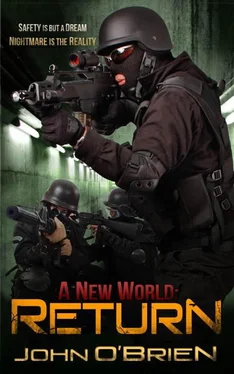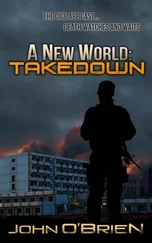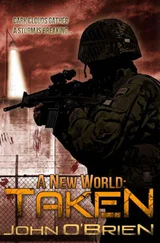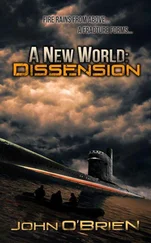I descend down to flight level 200 in order to give the propellers more air to bite into. The temperature gauge continues to climb with me pulling the throttle back a little further each time the needle approaches the upper limit, additionally moving the number four engine throttle up an equal amount.
“Why don’t we just shut it down?” Robert asks watching my actions.
“Because I want to keep the engine operational as long as I can. The thrust will help us and every minute we can fly at a higher airspeed gets us closer to McChord. And, I don’t want to find a closer airfield to set it down as once we’re down, we’re stuck there,” I answer.
“Nic, will you go get Lynn please? Robert, go back and take a look out of the window at the engine to see if you can see anything. Look for anything streaming out,” I add turning on the wing light so he can see outside a little better.
“What’s up?” Lynn asks as she arrives behind me.
“It looks like we may be losing an engine,” I answer her. “It shouldn’t be anything to worry about.”
“We can still fly right? Will we have to set it down?” She asks yelling in my right ear through the helmet.
“We should be okay. We can fly on three engines without too much difficulty. I plan to continue on to McChord as we’ll be stuck wherever we land,” I respond.
She nods and sits on the lower bunk next to our other passengers already seated there. Robert returns a short time later, sits and plugs back in.
“Well?” I ask hearing the click of his connection coming live on the intercom.
“I can’t tell for sure but it looks like there might be smoke trailing behind,” he answers.
I nod and pull the throttle back a little further, the lever approaching the inflight idle position. The outboard engine is at full throttle but not compensating fully for the loss of thrust on the inboard engine. Luckily it is the inboard engine malfunctioning or the loss of thrust would be felt more. I have to crab the aircraft a little to compensate for the loss of thrust and subsequent loss of lift on our right side, lowering the left wing a touch in order to keep a straight line of flight. I also pull the throttles back slightly on the left side as another measure to compensate.
My last retardation of the throttle reaches the inflight idle position. Any further action if the inlet temperature climbs to the overheat condition will be to shut the engine down. Right now the engine is not providing any thrust but it is not increasing our drag either. It has become a neutral party to our flight. If I can keep it running in this manner, I will still have use of it in case we need to go around on a bad landing setup or for anything else that may arise.
I watch the needle slowly climb upward while continuing to keep an eye on the other instrumentation. If number four started acting up or the needles for the two engines on that side started going haywire, we would have a completely different emergency. I am concerned with our weight and once again thankful for our decreased fuel weight. I do not want to descend any further if I can at all avoid it as we still have the Cascade Mountain Range to cross. They are not as high as the Rockies by any stretch but there are some tall peaks around.
The needle hits the upper limit of the engine and crosses over it. A blinking red light startles me and begs for attention. I look up to see the number three engine fire handle blinking rapidly at me as the master fire light also illuminates on the instrument panel. It has come time to shut the engine down before it can cause any further trouble. We are only about 45 minutes out from McChord. I have been following along on our enroute charts for possible emergency airfields just in case we do need to set it down quickly but we should be able to make it if we do not encounter any further problems.
I rapidly accomplish the quick reaction checklist items for an emergency engine shutdown — called bold face procedures. I pull the engine condition lever back to its detent position bringing the propeller into its feather mode which means that it is perpendicular to our flight path reducing the drag on the aircraft. With the propellers spinning idly on their own without any thrust being applied to them, they become like a giant plate hanging off of our wing. The drag of that alone would be enough to pull the aircraft to the right with very little we could do about it. That is why we have to make sure the propeller is feathered, so the wind doesn’t catch it and allow it to spin freely. I then reach up and pull the T-handle aft, the one with the blinking red light, for the number three engine. This cuts the fuel off to the affected engine effectively shutting it down. All of the gauges for the engines immediately come down to their zero position or are winding quickly downward verifying that the engine is shut down. The red light vanishes from the T-handle. With the red light going out and the temperature gauge winding down, I do not have to discharge the flame retardant into the engine. I punch off the master fire light.
I direct Bri to turn the generator switch and the fuel pump to their off position for the affected engine. I also have her make sure the fuel cross feed switch is in the off position after verifying that the number four engine is drawing fuel off of the tanks on the right side. We continue going through the cleanup checklist items. I put the throttle into its full forward position and close the oil cooler flaps as the final steps in completing the emergency engine shutdown procedure. I also tell Bri to watch the fuel gauges as the tanks on the left side will drain faster as they are supporting two engines as opposed to one. We may have to cross feed if the imbalance gets to be too much.
“How about Olympia? It’s closer,” Robert asks as the situation stabilizes.
“I want to be at McChord. One for the transportation and two to raid the Special Forces and other armories there,” I answer. “We’ll be fine.”
The mountains of the Cascade Range begin to slide under our nose as we limp every closer to McChord and our destination. I ease us down a few thousand feet. Mount Rainier is off to our right, its snowfields on top glowing brightly, reflecting the moonlight from it icy surface. There is not much snow left but enough to radiate its beauty. Our altitude will give us enough clearance to pass over the hills even though the top of Rainier reaches above the horizon. It seems like a long time since we watched it pass by our wing as we started this journey. It is quite a welcoming sight and it seems to welcome us back too.
I think of this as a homecoming and think on how Mom is doing; hoping she is okay. She has not left my thoughts but events have seemed to come in rapid succession so my thoughts did not stay there long. I will try my cell phone and call when we land although I have little hope of it working. If we had all engines running, I would head over and do a flyby to take a look at the place and, if she is still at her house, let her know we have returned. I am anxious and worried about her as I am sure she is about us. I will head over first thing in the morning if my call doesn’t go through.
Mount Rainier passes off our right wing and behind us as I begin a descent into the Puget Sound area. The roads and highways that I know are there should be lit with the lights of cars and trucks transiting through but everything is dark below us. The moonlight reflects off of the waters of Puget Sound presenting a tranquil scene.
I turn north in a descent as the navigation needle centers on the approach I set up into McChord. I would like to do a flyby to verify a clear runway but a go-around is not an ideal procedure on three engines. I will just have to trust that there is not anything large enough on the runway to impede our landing. It would totally suck to go through all that we have been through and come all of this way only to pile it in on our arrival.
Читать дальше












